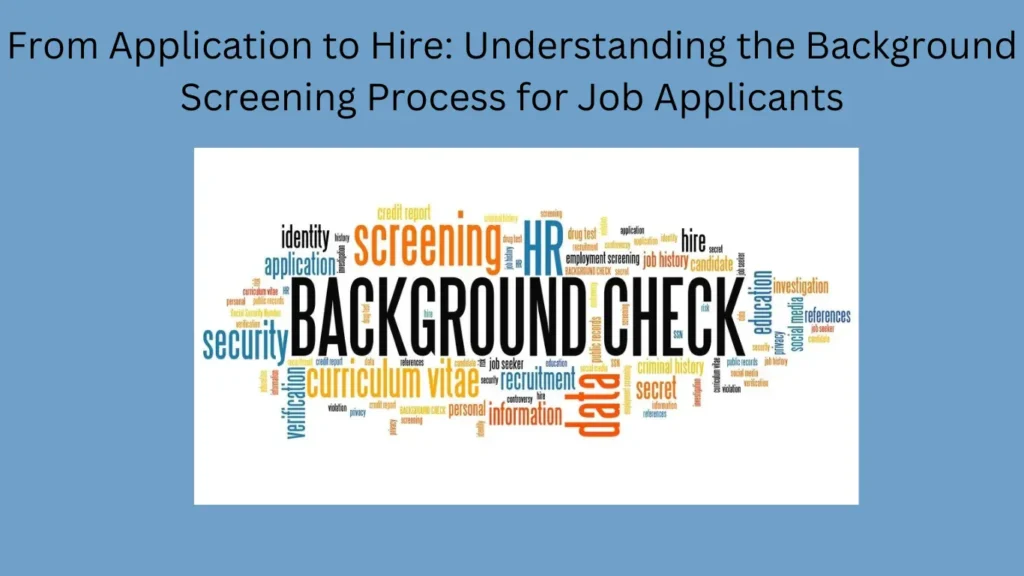Embarking on a job application journey involves not just submitting resumes and acing interviews, but also navigating the background screening process. This article aims to provide a comprehensive understanding of this crucial step, ensuring a people-first approach that is both helpful and reliable.
1. Application Transparency
Candidates deserve a clear understanding of what the background screening process entails. Transparent communication from the beginning sets the stage for trust and ensures that applicants are informed about the various checks involved.
2. Legal Compliance and Privacy Respect
A people-first content approach emphasizes strict adherence to legal regulations and respect for privacy. Background screening processes must align with data protection laws, safeguarding applicants’ sensitive information while promoting fair and lawful practices.
3. Candidate Involvement and Communication
Keeping candidates in the loop is essential. A people-first approach involves communicating with applicants, explaining the necessity of background checks, and providing avenues for candidates to address any discrepancies that may arise during the process.
4. Third-Party Expertise for Objectivity
To enhance reliability, many companies opt for third-party verification agencies. These specialized entities bring objectivity and expertise to the process, ensuring a fair and impartial assessment of candidates’ backgrounds.
5. Comprehensive yet Relevant Checks
A helpful background screening process strikes a balance between comprehensiveness and relevance. Checks should cover pertinent aspects such as employment history, education, and criminal records, contributing to an informed hiring decision without unnecessary intrusion.
6. Respect for Timelines
Acknowledging the importance of time in a candidate’s job search journey is integral. A people-first approach ensures that the background screening process is efficient, minimizing delays and aligning with the overall hiring timeline.
7. Open Dialogue on Results
Upon completion of the background screening, companies should maintain open communication with candidates. This involves providing clear results, explaining any findings, and offering candidates an opportunity to address or clarify information.
8. Continuous Process Improvement
A people-first mindset means viewing the background screening process as a dynamic, evolving system. Companies committed to improvement regularly assess and adapt their methods to industry best practices, ensuring fairness, efficiency, and candidate satisfaction.
Navigating the background screening process should be a transparent, respectful, and fair experience for job applicants. By incorporating these people-first principles, companies can foster trust, maintain transparency, and contribute positively to the overall candidate experience, from application to hire.
For further Inquires Contact Us
FAQs
Q: Why do companies conduct background checks?
A: Background checks ensure accuracy, assess risks, and create a safe and trustworthy work environment.
Q: Can candidates address discrepancies in their background?
A: Yes, companies encourage open communication, allowing candidates to provide explanations for any discrepancies.
Q: How long does the background screening process take?
A: Companies strive for efficiency, minimizing delays to align with the overall hiring timeline.
Q: What components are typically included in background checks?
A: Checks cover employment history, education, and criminal records, balancing relevance and comprehensiveness.
Q: How is privacy maintained during the background screening process?
A: Companies strictly adhere to data protection laws, ensuring privacy and safeguarding sensitive information.
